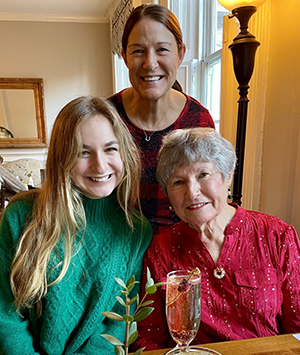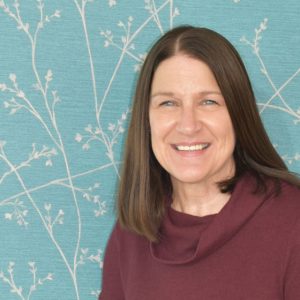Dr. Julie Ladocsi shares tips for prevention, screening, and treatment of osteoporosis at any age.
Osteoporosis is often called the silent disease because it’s impossible to feel your bones weakening. That is, until you end up fracturing or breaking one. Unfortunately, this happens to one out of two women over age fifty.

The good news is, there are several lifestyle changes you can make at any age to help prevent future bone loss and decrease your risk for osteoporotic bone fractures.
What is osteoporosis?
Osteoporosis is a common skeletal abnormality characterized by low bone mass and increased bone fragility. It results in an increased risk of bone fracture. In simplest terms, osteoporosis makes your bones weaker and easier to break.
How common is osteoporosis?
Osteoporosis is a common women’s health concern. While it affects men as well, more than 70 percent of bone fractures related to the disease in people older than fifty occur in women. In the US, one in two women over age fifty will experience an osteoporotic fracture.
What are the risk factors of osteoporosis?
Unfortunately, one of the biggest risk factors for osteoporosis is increasing age, something that we can’t avoid. Other common risk factors include having a body weight less than 127 pounds, parental history of hip fracture, smoking, excessive alcohol use, and long-term steroid use. Certain medical conditions such as rheumatoid arthritis can also increase your risk.
How is osteoporosis prevented?
Building strong bones during childhood is the best way to prevent osteoporosis. For females, 85 to 90 percent of adult bone mass is acquired by age eighteen. If your childhood days are long-gone, not to worry: There’s a lot you can do to strengthen your bones throughout your life, even if you already have osteoporosis.
Here are three major lifestyle changes you can make at any age to help build bone strength and prevent fractures.
1. Eat foods that support bone health.
The first area to focus on is nutrition. Adequate intake of dietary calcium and vitamin D is very important for preventing osteoporosis.
Foods that are high in calcium include dairy, leafy green vegetables, fish, whole grains, milk, and fortified juices. To increase your vitamin D, try consuming more fatty fish, shrimp, mushrooms, egg yolk, milk, and orange juice, as well as getting a little sunlight each day.
It can be difficult to get enough of the calcium and vitamin D you need from your diet. Talk to your doctor to see if they recommend supplements of these vitamins to help you maintain bone health.
2. Engage in physical activity.
Moderate- to high-impact aerobic exercise and weight-bearing, muscle-strengthening exercise are beneficial to bone health, even if you already have osteoporosis. Building strength and endurance and working on your balance and coordination can also help you prevent falls and fractures. If you’re just starting to exercise, or if it’s been a while, your doctor can help you come up with a routine that works best for your fitness level as well as your stage of osteoporosis if you already have it.
3. Avoid smoking and limit alcohol use.
Studies have shown a direct relationship between smoking cigarettes and decreased bone density. Heavy alcohol use in young adulthood is also linked to osteoporosis. Quitting smoking and limiting alcohol (no matter your age) can significantly reduce your risk.
How is osteoporosis treated?
Several medications are available to reduce the risk of hip and vertebral fractures in women at high risk. Estrogen with progesterone, bisphosphonates (such as alendronate), raloxifene, and denosumab are a few of the possible options. The decision regarding treatment of osteoporosis depends on individual patient characteristics, other medical conditions, and severity of osteoporosis.
Postmenopausal women might consider estrogen therapy, if appropriate. Age-related bone loss increases in women during this time in their lives. Talk to your doctor to learn more about estrogen therapy and whether you are a good candidate.
Is there a way to test or screen for osteoporosis?
Screening for osteoporosis is a major step you can take toward knowing and lowering your risk. Dual energy X-ray absorptiometry (DXA) measures bone mineral density (BMD) and is the preferred test for finding bone loss and assessing fracture risk. The test is easy – you lie on an X-ray table as a large scanning arm passes over your body – and it takes about ten to fifteen minutes.
The goal of screening for osteoporosis is to recognize patients with an elevated risk of suffering a low-trauma fracture who would benefit from intervention to minimize that risk.
When should you test?
The American College of Obstetricians and Gynecologists (ACOG) recommends screening for osteoporosis using DXA in all women sixty-five years of age and older. ACOG recommends screening women younger than age sixty-five if they are postmenopausal and have an elevated risk of osteoporosis due to any of the factors listed above. Most insurance carriers cover bone density screenings if you are over 65 or have one or more risk factors for osteoporosis.
How often to test depends on results of initial testing and risk factors. Your doctor can help you determine the right testing frequency for you.
Osteoporosis causes you to be more prone to painful breaks and fractures and to heal more slowly when they happen. These injuries can be costly and can cause a major disruption to your life. But it’s never too late to take action to prevent osteoporosis or slow its progression if you’ve already been diagnosed.
Talk to your provider about your specific risk factors, screening, and how to prevent or treat osteoporosis.
Where can I get a bone density test?
Virginia Physicians for Women’s new Koger Center office, where I see patients, offers bone density scans. You can call 804-897-2100 or go to vpfw.com to schedule.
It’s never too late to take action towards preventing osteoporosis or slowing its progression if you’ve already been diagnosed. We’re here to help assess your risk and determine what you can do to build or maintain healthy bones. Of course, we’re happy to help your mom as well!
To make an appointment with an OB/GYN provider at one of our Richmond, VA, locations, call VPFW at 804-897-2100 or message us to schedule online.
